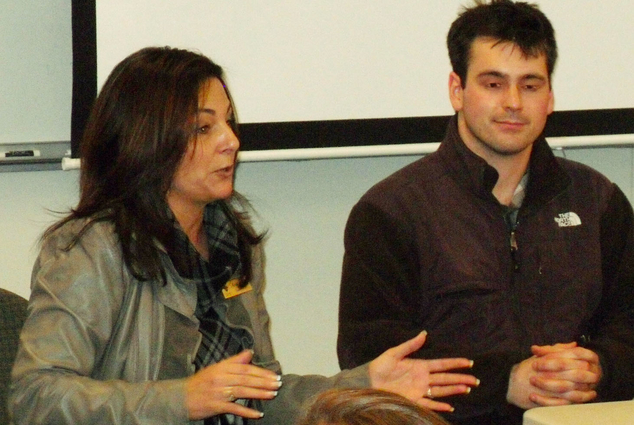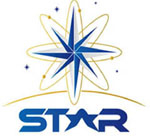Future teachers look to STAR for science enlightenment
Where can undergraduate science majors with an eye on a teaching career go for a first-hand experience in applied research? The answer can be found in the STAR program. STAR or Science Teacher and Researcher -- is a collaborative project between California State University (CSU), the U.S. Department of Energy national research laboratories (including LLNL), the National Science Foundation (NSF), NASA, federal agencies and private research organizations.
Last week, a group of Cal State students visited the Lab for tours of facilities and talks by managers, as well as former STAR participants who shed more light on the value of the STAR program at LLNL -- an eight-week mentored and paid summer research internship for aspiring science and mathematics teachers
Bryan Rebar, STAR program director, facilitated a panel discussion with guests Kelly Bowers, superintendent of the Livermore Valley Joint Unified School District; STAR participants Shayne Bradshaw (who completed an internship at LLNL) and Annette Poole (who completed an internship at Sandia); and Paula Zermeno of the Center for Accelerator Mass Spectrometry (CAMS), who has served as a mentor for interns.
Rebar told the group that the program's research opportunities "will help you think about best practices for teaching." He said that because STAR participants are students themselves in the laboratories, they bring a sense of wonder and excitement about science back to the classroom.
Over the past four summers, STAR has offered 157 placements at 15 research sites in California, Colorado, Maryland, Tennessee and Washington.
Poole said her internship helped her grasp a new vocabulary and how to function in a research environment. "It was fascinating to work there."
Bowers talked about the program from a school district's perspective. "Anyone with STAR experience would rise to the top when looking for a job," she said. "You are the missing link," she told CSU students, noting that school districts value science teachers who also have research experience. "That's what we're missing. That's what we need," she added. "We want our kids engaged."
LLNL has been the largest supporter of the STAR program, which began at the Lab in 2007. The students are enrolled in the Lab's Teacher Research Academy (TRA) as part of their STAR experience where they complete professional development workshops with practicing teachers while they complete a summer internship. Student stipends are paid by STAR.
Some of the STAR participants are enrolled in the CSU East Bay College of Education and apply their TRA work and internship at LLNL toward a masters' degree in education. Several former LLNL STAR participants have gone on to be hired as science teachers by Livermore, as well as neighboring school districts.
This year's STAR students will begin their internships June 13. LLNL expects to have 15 students this year. The LLNL Science Education Program (SEP) is seeking mentors for students in biology, computer science, math, and physics and chemistry this summer.
For more information about the STAR program, go to the STAR Web page or contact Richard Farnsworth, 925-422-5059.






